
Sacrifice and Conversion in the Early Modern Atlantic World
Maria Berbara
The following is an adapted excerpt from Sacrifice and Conversion in the Early Modern Atlantic World, edited by Maria Berbara. Available now from Harvard University Press.
Sacrifice and Conversion in the Early Modern Atlantic World investigates the transit of texts, music, images, rituals and ideas related to the concepts of sacrifice and conversion across the Atlantic in the Early Modern period. When Europeans arrived in the American continent in the 15th and 16th centuries, they were confronted with what they perceived as sacrificial practices. Corresponding representations of Tupinamba cannibalism, Aztecs ritually slicing human hearts out, and idolatrous Incas flooded the early modern European imagination. At the same time, Europe was living through its own horrors. This was a period in which the European region was ravaged by the disasters of war, and millions of people — both civilians and soldiers — lost their lives in confrontations over territorial expansion, political power, financial interest, and religion.
Disagreements about the Christian doctrine of “transubstantiation” were an important part of the religious conflicts that fractured Europe during this period. Transubstantiation refers to Christians’ belief that, during the celebration of the Eucharist (or Holy Communion), the Christian sacraments of bread and wine are transformed into the substance of the Body and Blood of Jesus Christ, with only the accidents (i.e. the appearances of the bread and wine) remaining. The term “transubstantiation” came into common usage in the late twelfth century, before the Fourth Lateran Council (1215) defined belief in transubstantiation as a core tenet of the faith (de fide). Although the doctrine had been challenged before, it was in the sixteenth century that Protestant reformers and their opponents elevated debates about transubstantiation to the center stage, thus generating a myriad of interpretations on the physical, symbolic, and spiritual significance of the words of Christ — “this is my body”— during Communion.
The climax of these debates coincided with the arrival in Europe of textual and visual representations of human sacrifice and ritual anthropophagy practiced by indigenous societies in the “New World.” New printing technology amplified this juxtaposition by making it possible for Europeans to set texts and images of exotic customs from the Americas alongside brutal accounts of wars on their own continent. The fragmentation of Christianity as people knew it thus coincided with the theological and existential reorganization of the world that was prompted by the “discovery” of a fourth continent.
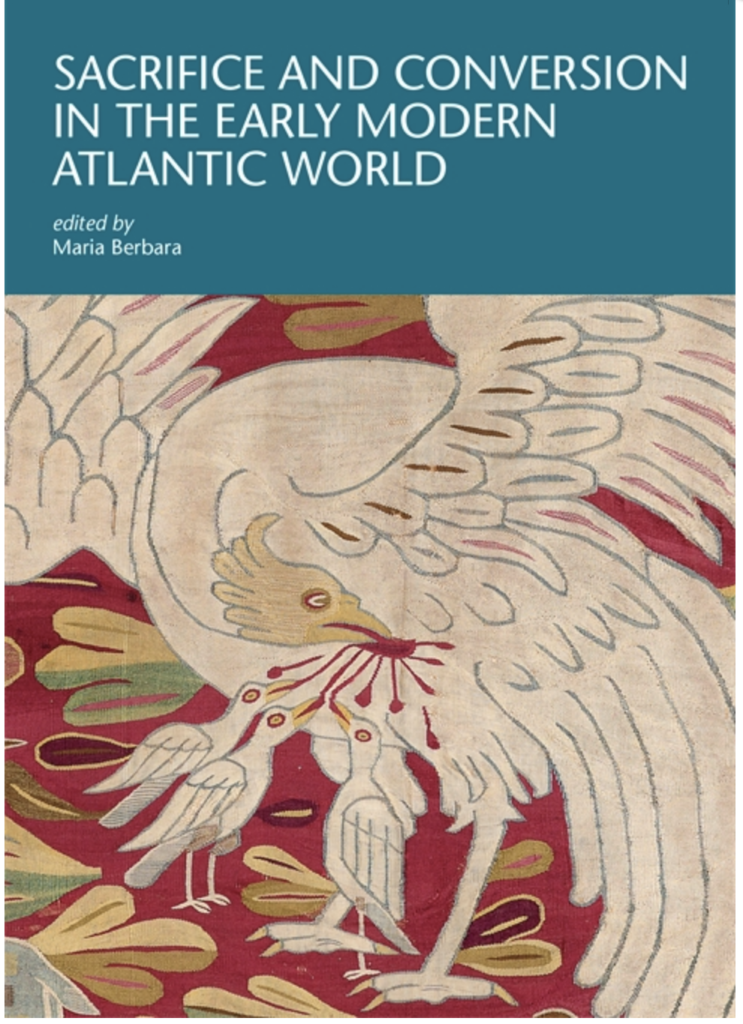
Sacrifice and Conversion in the Early Modern Atlantic World examines the mutual influences between the European invasions of the American continent and the crisis of Christianity during the Reformation and its aftermath, which arose in part from debates about the conceptualization and representation of sacrifice. Because of its centrality in religious practices and belief systems, sacrifice is a crucial way to understand not only cultural exchange, but also the power struggle between American and European societies in colonial times. How do particular communities interpret the sacrificial practices of other cultures, and what roles did these interpretations play in efforts to convert Indigenous cultures to Christianity? This volume thus uses the concept of “sacrifice” as a lens to examine encounters between European and American conceptualizations of sacrifice — as expressed in texts, music, rituals, or images — and their intellectual, cultural, religious, ideological, and artistic derivations.
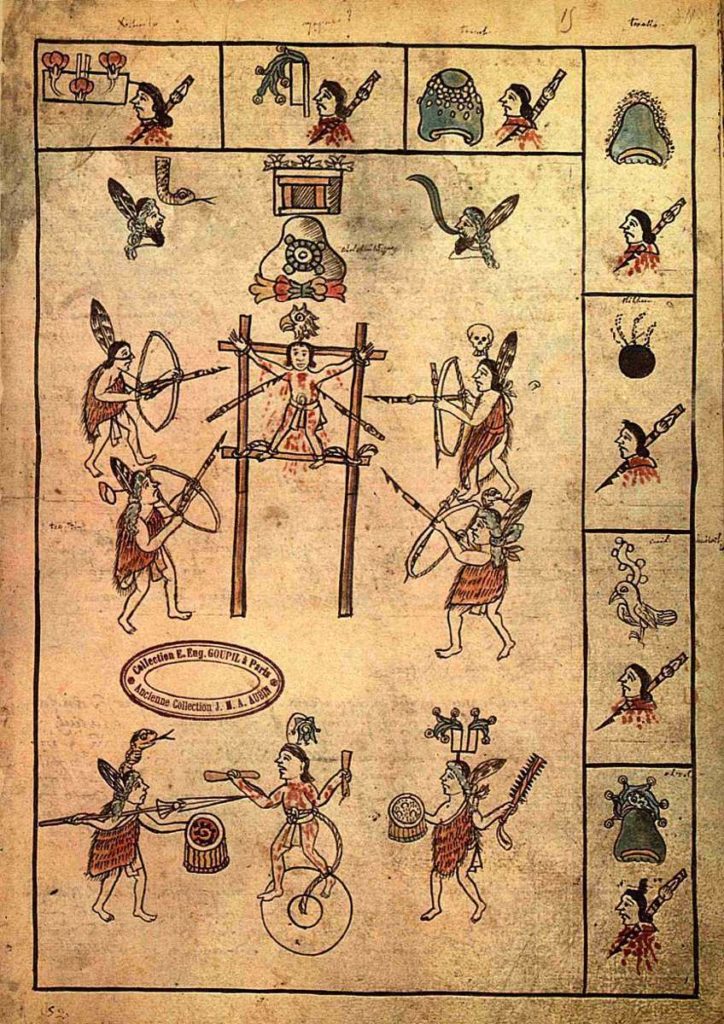
This book problematizes the ways in which images and discourses about what were perceived as American sacrificial practices relate to religious debates and conflicts in Europe in the early modern period, as well as the extent to which European understanding of these practices affected processes of Christian conversion. Similarities, or analogies detected by missionaries, politicians, or artists between European and American sacrificial practices could serve as tools in the process of persuasion and translating Christian concepts for potential converts in the “New World.” To cite but two examples, the Mesoamerican Tlacacaliztli — a form of arrow sacrifice — could be equated to St. Sebastian’s martyrdom; and in Portuguese America the Jesuit Manuel da Nóbrega looked for points of contact between Christian and Indigenous music and musical instruments used in sacrificial rituals when devising strategies of conversion — “because likeness is a cause of love,” he wrote, quoting Thomas Aquinas. The chapters in this volume further illustrate how Christian conversion strategies were often built upon transformations, translations, and resignifications of the meanings and forms of sacrifice in indigenous cultures. The most dramatic geographical expansion of Christianity in history coincided with its fragmentation in Europe. Against this background, a central point of contention became the authority under which processes of conversion were carried out, and what they meant.
Even though the comparisons between Christian and American sacrificial rites did not always carry a positive, reinforcing meaning — through the Christian lens, the latter could be perceived as idolatrous and demonic — the way in which these relations were conceptualized by Europeans determined not just strategies of conversion, but also which persons and societies could be converted in the first place. American beliefs and religious practices often survived only to the extent to which they changed and adapted to Christianity. As formulated by Hayden White, the relationship established by Europeans with Americans could be understood in terms of either continuity or contiguity: while the former implies a notion of relative identification in which differentness does not necessarily imply an insuperable distance, the latter encapsulates them in essentially separated, irreconcilable categories. Those opposite views engendered different attitudes toward American societies: war and aggression in the first case, conversion in the second.
This book includes articles from a broad range of disciplines, including anthropology, art, religious and political history, cartography, and musicology. It is divided into four sections: “Sacrifice in the Americas: Concept, Ritual, Transformation” considers the concept of sacrifice in American societies prior to Christian conversion; “The Materiality of Sacrifice,” engages theological and anthropological aspects of sacrificial discourses and images; “Conversion and the Representation of Otherness” contemplates the role of music and images in conversion processes, as well as concepts of alterity and similarity; and “Images Transcending Genres: Sacrifice between Martyrdom and Heroism” explores the relationship between these two concepts across various genres.
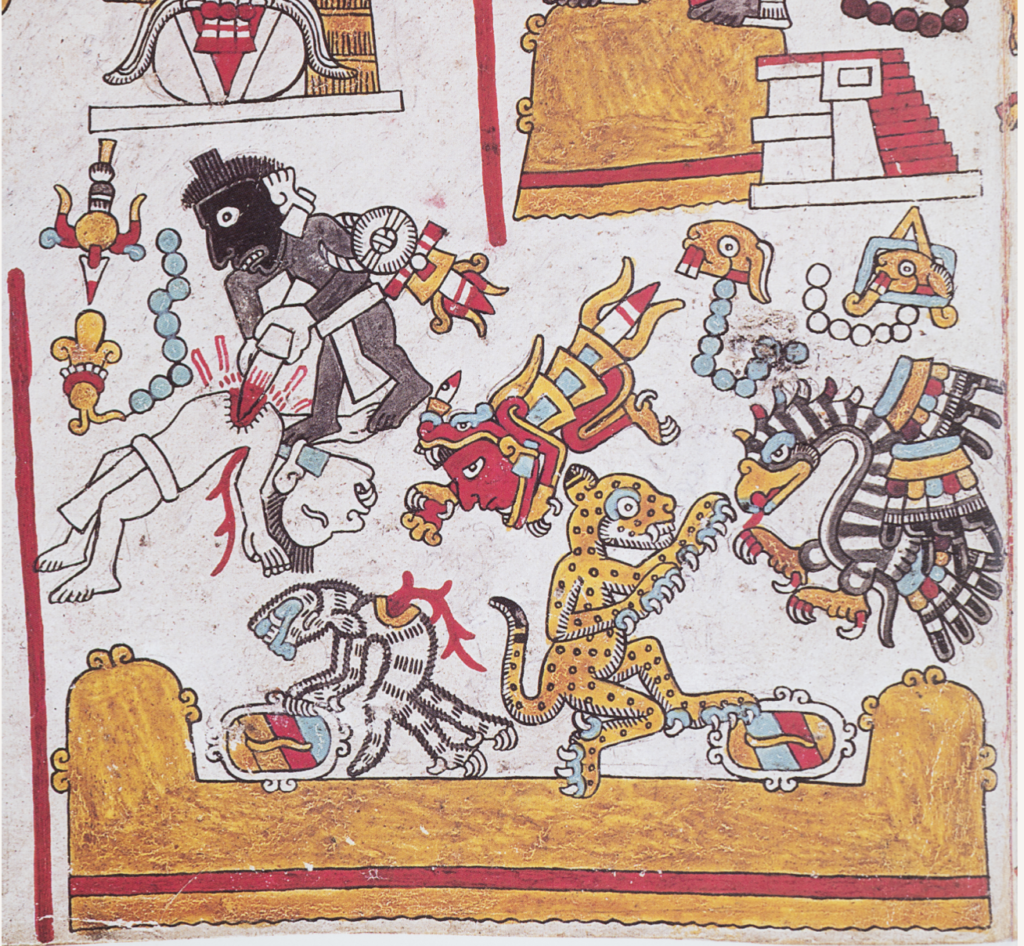
Section 1
The first section focuses on the concept of sacrifice in American societies, paying special attention to Andean cultures (Tom Cummins) and to the Mesoamerican world (Emilie Carreón Blaine and Patrick Hajovsky). Cummins examines how sacrifice was linked to idolatry in colonial Spanish America by missionaries and chroniclers, and so became “one of the essential signs in the European syntax of idolatrous barbarity in America.” He also shows how sacrificial rituals could mean something completely different to the indigenous communities than to the Christians who described and visually represented them. In the particular case of Bernardino de Sahagún’s Historia General — commonly known as the Florentine Codex — Cummins argues that a set of visual changes was purposely introduced in order to conform the subject of Aztec idolatry and sacrifice to the way in which these concepts are enunciated in the Bible.
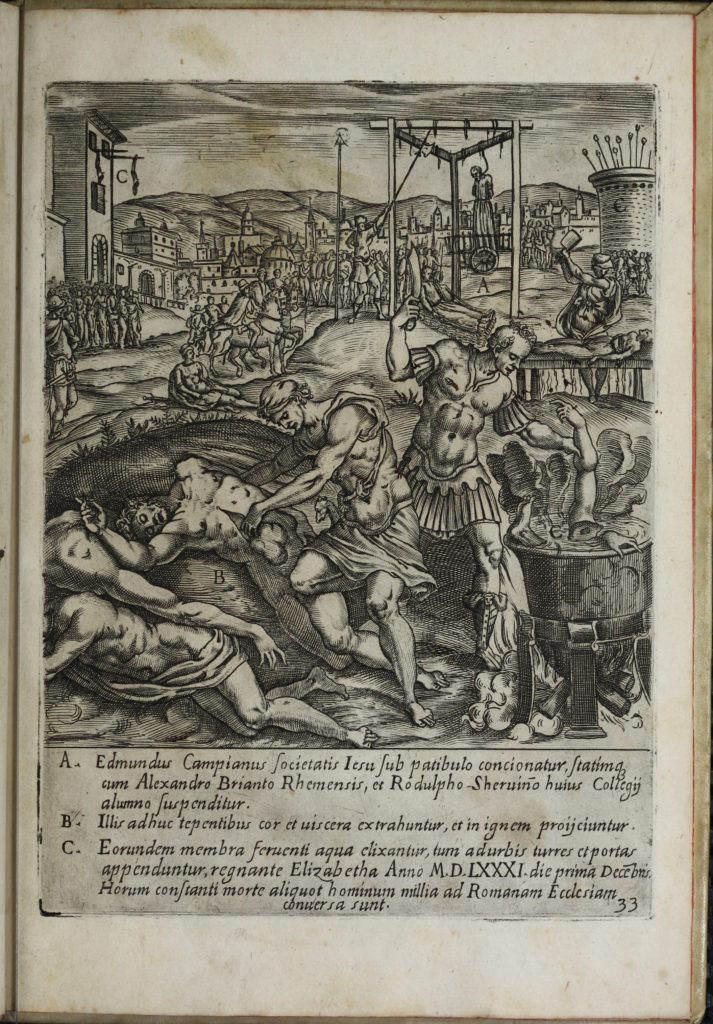
Section 2
The two chapters of the second section present complementary views regarding the historical and historiographical understanding of Christian sacrifice. Anselm Schubert explores the material and theological history of the Christian Eucharist in different confessional settings and its impact on the encounter of Americans and Europeans on the American continent. Byron Hamann gives an overview of theories of sacrifice from the anthropological perspective in order to explore the similarities and differences of two edible gods from the early modern Iberian world: the Catholic Host wafer, and the dough image of Huitzilopochtli, patron deity of the Mexica Aztecs. Both papers present thorough surveys of recent scholarship on the materiality of sacrifice, with particular emphasis on the Eucharistic substances and the making of the Host.
Section 3
The chapters in the third section approach, from different angles, processes of conversion, their links to sacrificial concepts, and the perception and representation of otherness in connection to religious rites. Jens Baumgarten uses St. Benedict as a case study to examine the practice of conversion and autosacrifice in Portuguese America and its relation to skin color. In doing so, he sheds light on yet another aspect of conversion processes in America: the relationship between missionary politics and the representation of enslaved Africans. Philippe Canguilhem investigates how music was used by Dominican and Franciscan friars, as well as the Jesuits, to help them in conversion processes. Friars adapted the European musical language to the local customs, either by having the Latin texts translated into native languages, especially Nahuatl, or by allowing the Indigenous peoples to keep their own instruments and way of singing for Christian worship.
Adam Jasienski takes a close look at the concept of disgust as a framework for understanding representations of sacrificial violence. In spite of disgust’s universal evolutionary significance, the author argues that it is also culturally bound, and could therefore be provoked by different objects and actions in Mexican societies than in those of Early Modern Europe . He also examines how these two cultures produced contrasting expressions of disgust in connection to their own sacrificial conceptions. When linked to a given religious (sacrificial) practice, for example, damaged bodies or bodily fluids could cease to be physically offensive. On the last chapter of this section Paolo Vignolo starts from a thorough material examination of Juan de la Cosa’s famous 1500 nautical map in order to analyze the relationship between anthropophagic sacrifice and Christian conversion from the cartographic point of view. The figure of St. Christopher that appears at the left of the map is central for his analysis: Christopher — an unequivocal emblem of evangelization — can also be connected to the man-eating cynocephali represented in the northern steppes of Scythia, in the lands of Gog and Magog.
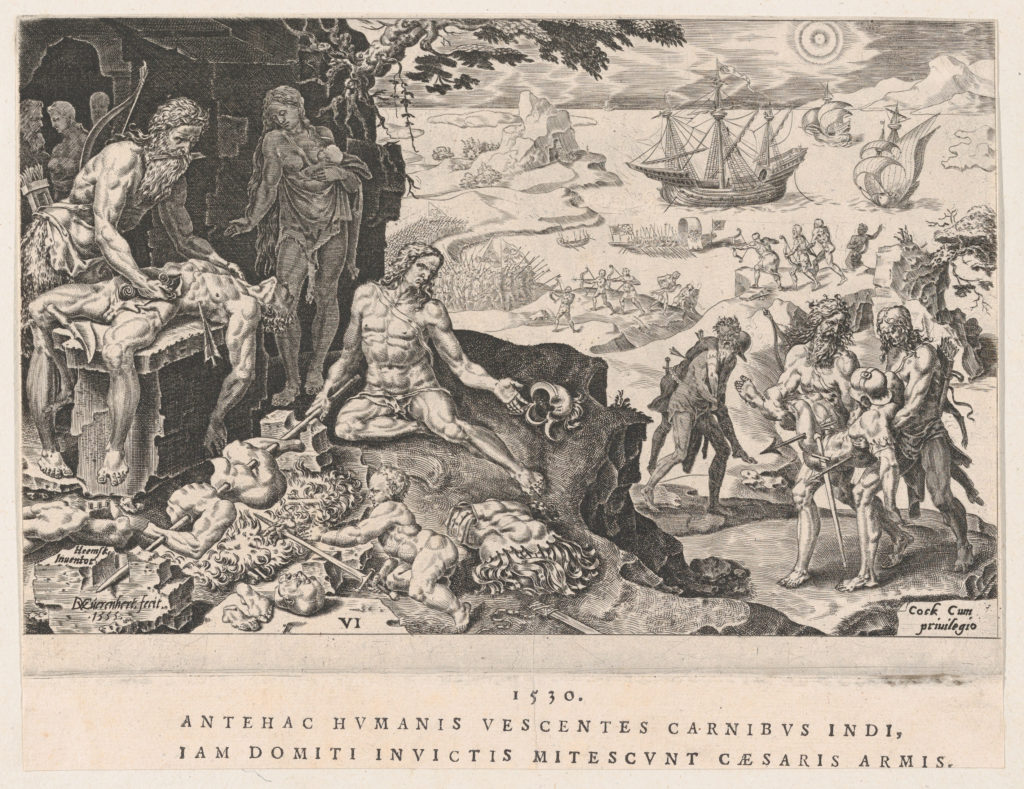
Section 4
The fourth and last section addresses the intersection between the concepts of sacrifice, martyrdom, and heroism, and explores how iconographic elements traditionally associated with one of these concepts could permeate into other concepts. Margit Kern reflects on how “holiness” can create a distinction, in various cultures, between sacrifice and murder, and between legitimate and illegitimate violence. She concentrates her analysis on the representation of St. Sebastian as compared to the Mexica sacrifice Tlacacaliztli. Kern argues that the similarities between these images might be the reason for the missionaries’ decision to avoid confusion by preferring Santiago as an intercessor in the case of plagues — and, on the concept of transcultural negotiation, as instrumental for the understanding of St. Sebastian’s iconography in the Corpus Christi series in Cuzco.
Maria Berbara examines book prints produced in connection with Antarctic France, a French colonial enterprise in what is now Rio de Janeiro, in the 1550s. She observes the two-way migration of motifs, or visual codes, between these representations — especially representations of cannibalism — and European martyrologies. Berbara argues that images deriving from the Antarctic France acted as a multifunctional repertoire valid for the representation not only of cruelty but also of sacrifice and martyrdom.
Carmen Fernández-Salvador investigates the transit and resignification of images as they circulated between legal treatises and representations of martyrdoms. She shows that the reproduction, reuse, and resignification of such images, as well as the transference of conventions across geographic space and pictorial genres, had a profound effect on the emerging iconographies of the sixteenth century, and on the forging of a common visual culture in a global world. Alongside representations of martyrdoms in Europe, judicial images could inspire illustrations of sacrifice in New Granada, as is made clear in the bestseller editions of Pedro de Cieza de León’s Crónica del Perú.
Finally, Patricia Zalamea analyzes the construction and reception of the iconography of Sugamuxi, the high priest of the Muiscas, in its longue durée. The figure of Sugamuxi was presented as a role model for doubting the concept of sacrifice and converting to Christianity under the name of Don Alonso. As such, Sugamuxi reflects the diverse ways in which sacrificial practices were interpreted, beginning with the chroniclers of the late sixteenth century up to the nineteenth-century Romantic views of an indigenous past in the context of the wars of independence led by the criollos against the Spanish crown.
In sum, Sacrifice and Conversion in the Early Modern Atlantic World focuses on the transit of artistic, cultural, ideological, material, and religious texts and images related to the fundamental concepts of sacrifice and conversion between Europe and the Americas in the sixteenth and seventeenth centuries. The contributors to this volume show how the complex relation between sacrifice — understood as the quintessential religious ritual — and forced conversion remains one of the strongest knots of the modern colonial system, as well as how its consequences permeate the structure of most American societies to this day.♦

Maria Berbara is a Professor of Art History at the State University of Rio de Janeiro. She received her Ph.D. from the University of Hamburg and specializes in Italian and Iberian art produced between the fifteenth and seventeenth centuries, as well as in cultural history, early modern globalism, and intellectual interchange in the Atlantic world.
Recommended Citation
Berbara, Maria. “Sacrifice and Conversion in the Early Modern Atlantic World.” Canopy Forum, February 9, 2023. https://canopyforum.org/2023/02/09/sacrifice-and-conversion-in-the-early-modern-atlantic-world/

